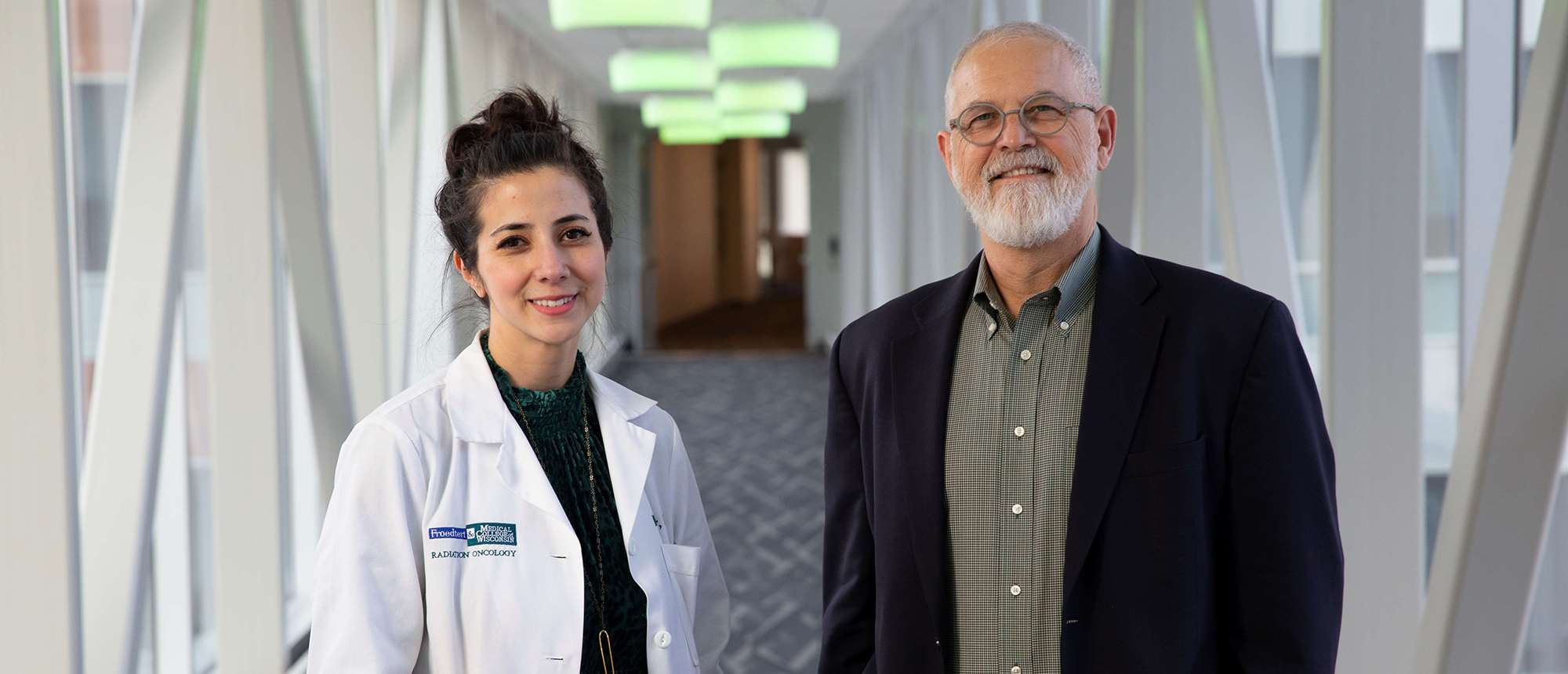Reaching Out to the LGBT Community
Malika Siker, MD, and Alan G. Nyitray, PhD, are working diligently to address cancer disparities in Milwaukee’s LGBT communities.

For decades, cancer disparities in LGBT communities flew under the radar, only gaining notice in the 2010s through research that revealed myriad examples of the health care disparities among sexual and gender minorities (SGM).
To address this issue, medical organizations began focusing on the root causes, including the American Society of Clinical Oncology (ASCO). In April 2017, it released a position statement recognizing the disproportionate cancer burden in the LGBT community and outlining five recommendations to address the needs of SGM populations: patient education and support, workforce development and diversity, quality improvement strategies, policy solutions and research strategies.
Spurred by that statement, Malika Siker, MD, associate professor of radiation oncology at the Medical College of Wisconsin (MCW) reached out to MCW’s Cancer Center. “I wanted to see what we could do to bring issue to light,” she says.
One of the ideas to move forward with those recommendations was to develop a “Community Conversation” focused on cancer disparities at the Milwaukee LGBT Community Center. Community Conversations are discussions developed by the MCW Cancer Center’s Community Advisory Board as a collaboration between community and academic centers to share and collect feedback about challenging issues. This event also provided an opportunity to promote the new Froedtert & the Medical College of Wisconsin LGBT Inclusion Clinic, which opened last year. Another project that emerged from these partnerships included participation in the Wisconsin LGBTQ Summit produced by Diverse & Resilient and Fair Wisconsin Education Fund in March 2019 where MCW leaders led two additional conversations, one on human papillomavirus (HPV) vaccination and the other about coming out to your provider.
“There is a great group of energized individuals in the MCW community, including medical students, residents, faculty, and staff who would like to put a spotlight on the issue of cancer disparities in the LGBT community,” Dr. Siker says.
Dr. Siker is also teaming up with various MCW Cancer Center faculty to continue this work, including Alan G. Nyitray, PhD, associate professor in the department of psychiatry and behavioral medicine. Dr. Nyitray, who joined the team at MCW in July 2018 has presented his research efforts at several events, including leading the discussion at the Wisconsin LGBTQ Summit on HPV vaccination and has participated at different events in the community.
Dr. Nyitray’s research is specifically focused on HPV with the overall goal of reducing mortality related to anal cancer, which is caused by HPV. In particular, gay and bisexual men are at increased risk for anal cancer.
According to Dr. Nyitray, HPV is an infection that almost everyone gets in their lifetime. But, he says, some people are unable to clear or control the infection.
“Men and women overall in the US have an annual rate of one to two cases of anal cancer per 100,000, but in gay and bisexual men who are HIV negative, it’s 35 per 100,000, and for those who are HIV positive it could be 100 to 200 per 100,000,” Dr. Nyitray explains.
One of the biggest hurdles to addressing this problem is a lack of uniform screening recommendations for anal cancer, Dr. Nyitray says.
“We need to know what kind of screening works best for gay and bisexual men,” he notes.
Dr. Nyitray says take-home kits may be one option to successfully screen for anal cancer among gay and bisexual men. He says men, in general, are notoriously bad at getting preventive screening at a doctor’s office and maybe home kits will be more acceptable. 400 men will be recruited for that study, all of whom will eventually receive high-resolution anoscopy which is the gold standard for detecting anal precancerous lesions that could lead to cancer. A second study will begin recruiting gay and bisexual men in fall 2019 to find out if individuals can recognize when visible or palpable abnormalities are present at the anus. When anal cancers are diagnosed, the average size of the tumor is already over an inch wide. Dr. Nyitray believes that gay and bisexual men could learn to recognize an abnormality when it’s smaller and then notify a doctor. It may help detect anal cancer at an earlier stage when it’s more easily treatable.
The findings from that study, which involves low-cost screening, could have worldwide repercussions. “We’re wondering if this screening is an option for low and middle-income countries,” Dr. Nyitray says.
While Dr. Siker and Dr. Nyitray know they have long way to go, they believe momentum and motivation are on their side as these projects attempt to address two recommendations from the ASCO.
“As healthcare providers, we need to work to gain the trust of the LGBT community. We need the community to know they are welcome here, and that we are going to do everything we can to make sure they have the same health outcomes as others,” Dr. Siker says. “We also need to find ways to better investigate these disparities and work in partnership with the community collaboratively.”



